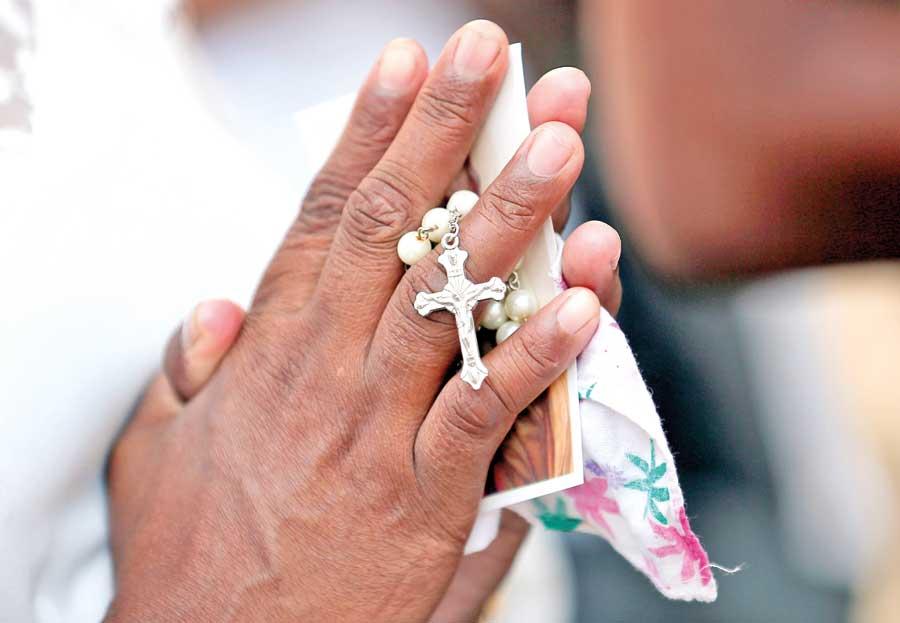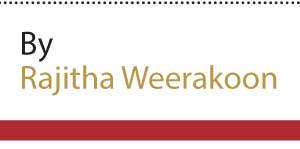26 Dec 2022 - {{hitsCtrl.values.hits}}

Sri Lanka has a history of Sinhala Kings converting to Christianity
With Rajasinghe turning his focus on Uda Rata, Karalliyadde Bandara, who had already received Baptism under the name Don John, obtained a small Portugese force for his protection
At least four Sinhala Kings were converted to Christianity with the advent of the Portuguese whereas there was none converted during the Dutch era. 
According to historians, the first to be converted was Dharmapala (1551-1597CE) of the Kotte Kingdom. A.V. Suraweera, writing a comprehensive account of the rulers of Kotte Period and their relations with the Portuguese in his English translation of “Rajavaliya” states that the Kotte Kings – Dharma Parakramabahu 1X (1489-1513CE) and Vijayabahu V1 who reigned from 1513-1521CE in the initial stages of the Portuguese era, remained friends with the Portuguese. Although it was during the reign of Vijayabahu that the Portuguese settled down in “Kolomtota” (later Colombo,) the period however, was marked as peaceful with no requests made for favours and no favours granted.
Later however, political developments within the country, dragged the Portuguese into internal affairs. With Bhuvanekabahu’s (1521-1551CE) brothers Mayadunne and Raigam Bandara creating unrest in the territories of the Sitavaka kingdom, Bhuvanekabahu, whose grandson was Dharmapala, thought “there was no king among the kings of the entire Jambudvipa equal to the great King of Pratikal (Portugal.)” Thus, an image of gold, silver and ivory, resembling Dharmapala, was sent to the King of Portugal, in addition to gifts.(Rajavaliya) The Portuguese in consequence, together with the Sinhala army, destroyed Sitavaka on the request of Bhuvanekabahu, defeating Mayadunne – which marked the first conquest of the Portuguese in Lanka.
On Bhuvanekabahu’s death, the viceroy of Portugal, installed Dharmapala as the King of Kotte. Dharmapala was converted to Roman Catholism faith and was baptized under the name Don Jivan Periya Pandara. Rajavaliya explains: many chiefs in the city of Kotte following the King, got baptized. Records also reveal that women co-habited with Portuguese men. As the King gifted his kingdom with a deed to the Pratikals, on his death, the viceroy took over the kingdom. And the Buddhist monks living in Kotte, departed to other parts of the island.
Vikramabahu (1469-1511CE,) the earliest ruler of Uda Rata who is highlighted in Rajavaliya, was a relative of the Kotte Kings. He made his appearance in history when Vijayabahu’s three sons fled the Kotte Kingdom and sought military assistance from him against the King. The military action divided Kotte Kingdom into three – a division that made the Uda Rata Kingdom the largest in land area.
Fortunes changed when Mayadunne failed to conquer Kotte and his brother Bhuvanekabahu planned to annex Uda Rata when Vikramabahu appealed to the Portuguese for help expressing his desire to be converted to Christianity. Accordingly, a friar was summoned from Kotte and Vikramabahu was baptized in secrecy. The news was sent to Goa. However, before the expected Portuguese troops arrived in Kandy, Vikramabahu was driven to make peace with Bhuvanekabahu. His daughter was already on her way to Kotte to be the bride of Dharmapala.
Fortunes changed when Mayadunne failed to conquer Kotte and his brother Bhuvanekabahu planned to annex Uda Rata when Vikramabahu appealed to the Portugese for help expressing his desire to be converted to Christianity. Accordingly, a friar was summoned from Kotte and Vikramabahu was baptized in secrecy
The delay of the arrival of the Portuguese troops in Kandy, led an angry Vikramabahu to refuse to declare himself a Christian or let his son be baptized unless the Portuguese captured for him the kingdoms of Sitavaka and Jaffna. Bhuvanekabahu too, taking advantage of the situation said that if the King remained a Christian or continued to keep Portuguese soldiers in his court, he would not accept his daughter as the bride of his son Dharmapala. Or, have any dealings with the King.
The turn of events made Vikramabahu hostile towards the Portuguese. He did away with the conversion and the Portuguese retreated to Colombo.
The first attempt of converting a king in the Uda Rata kingdom thus failed. But, Vikramabahu’s son Jayavira (1511-1552CE) continued to give assistance to the three princes of Kotte. The turmoil of Kotte was a necessary condition for the rise of the Kandyan Kingdom.
Rajasinghe 1 (1581-1593CE) before long on succeeding Mayadunne, attacked Uda Rata. Jayaveera Bandara turned to the Portuguese and accepted Uda Rata as a satellite state. The subordination thereafter, brought a small Portuguese force and Roman Catholic priests to Kandy.
According to Rajavaliya, Jayavira’s older son, Karaliyadde Bandara, raised a revolt in Uda Rata, killed his ageing father Jayavira and took over the reign of Kandy. With Rajasinghe turning his focus on Uda Rata, Karaliyadde Bandara, who had already received Baptism under the name Don John, obtained a small Portuguese force for his protection. But with one of his chiefs, Virasundera Bandara crossing over to the side of Rajasinghe1, Rajasinghe marched to Uda Rata and routed the Portuguese army. Karaliyadde Bandara and his Court fled with the Portuguese to Trincomalee where he and his wife died eventually of small pox. But not before entrusting his daughter Dona Catherina, who is to play a significant role in the politics of Uda Rata, to the Portuguese. They took her and kept her at the Mannar Portuguese Fort where she received her lessons and was even sent to Goa for further studies.
One of the outstanding kings to rule Uda Rata – Vimaladharmasuriya 1 (1591-1604CE) too embraced Christianity when he fled Kandy on hearing of the killing of his father by Rajasinghe of Sitavaka and arrived in the Portuguese Fort of Kolomtota. Then known as Konnappu Bandara, he was baptized as Dom Joao of Austria and while living in Colombo, he was sent with the Portuguese troops to capture Uda Rata. In Kandy, he first defeated Rajasinghe and later switched sides, crossing over to the Uda Rata troops.
When the Portuguese troops came along with the rightful heir Dona Catherina to defeat Konnappu Bandara and install her in the Uda Rata Throne, Konnappu Bandara defeated the Portuguese, forcefully married Dona Catherina and commenced an illustrious reign as a Buddhist monarch under the name Vimaladharmasuriya 1. Queen Dona Catherina remained a church-going catholic with the royal family leading a western styled life in the kandyan court.
Following Vimaladharmasuriya’s death, as requested by him, his relative, a Buddhist monk, disrobed and took over the administration as King Senarat (1604-1635CE.) Although the late monarch entrusted his children in Senarat’s care, Senarat married Dona Catherina and made way for his son by her to take over the reign as Rajasinghe 11 (1635-1687CE.)
Senarat, following Vimaladharmasuriya, got Franciscan friars to educate his children. Rajasinghe11 read, wrote and spoke Portuguese and favoured Christianity. He permitted Christian monks and priests to build churches in his domain and freely propagate the religion.
08 Jan 2025 3 hours ago
08 Jan 2025 3 hours ago
08 Jan 2025 4 hours ago
08 Jan 2025 4 hours ago
08 Jan 2025 5 hours ago